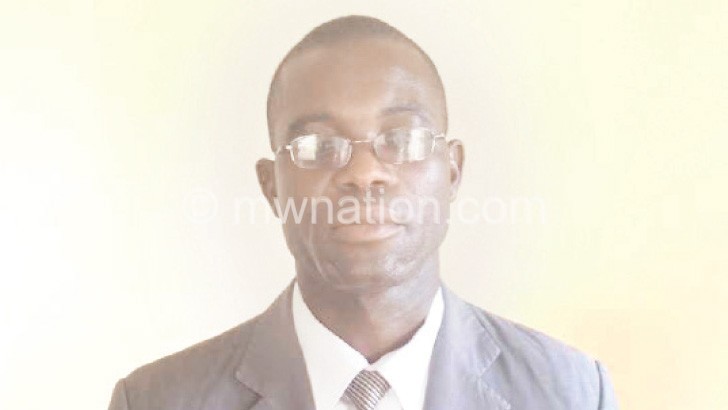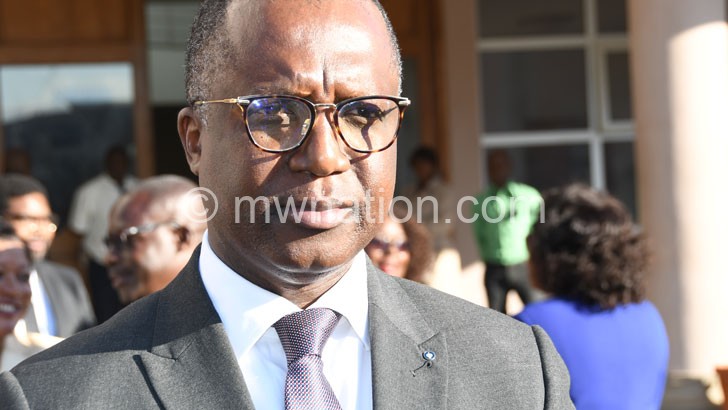‘Health spending is getting worse each year’
A recent study conducted by civil society organisations (CSO’s) has found that per capita health spending continues to get worse each year in Malawi. The study reveals that poor budget tracking and implementation is the lead cause of the current scenario. Our reporter FATSANI GUNYA speaks to SAFARI MBEWE, executive director of Manet+ who now shares some of the highlights of the study.

should be enhanced
Q1
Share with us the key findings of the study?
A1
The findings are not all that rosy for the country’s health sector. The analysis shows that health spending as a percentage of total expenditure is much lower than it was five years ago. We feel that the downward trend, if left unchecked, could push the health sector out of the government’s priority list. The fall in per capita health spending is even more alarming now, getting worse each year while that of HIV and Aids remains uncertain, difficult to trace owing to reforms that have moved most HIV activities to the Ministry of Health from the Office of the President and Cabinet’s [OPC] Department of HIV/Aids and Nutrition.
Another resource that is hard to trace is the two percent of an allocation that a ministry, department or agency (MDA) is supposed to spend on HIV and Aids activities over and above the allocations to the Ministry of Health and the National Aids Commission (NAC). Even officials from the Ministry of Finance, Economic Planning and Development say they have been unable to effectively track the two percent resource requirement by MDAs in terms of whether the money is indeed set aside, whether it is used for intended purposes and the impact it is having on the national response to the pandemic.
If we closely look at the percentage share of the health budget to the total National Budget over the past five years, Malawi’s spending on health has averaged around 10 percent. This is a reduction from 12 percent in the 2012/13 financial year, and was much better at more than 15 percent in 2011/12 when Malawi was one of only six African countries to have passed the 15 percent mark [percentage] of national budgets that the continent’s leaders committed to providing to the sector in the 2001 Abuja Declaration.
Our budget analysis shows that there have been little improvement to date on this benchmark because health spending as a ratio of the National Budget has remained stubbornly well below the Abuja Declaration in which the Malawi Government committed to allocate at least 15 percent of the budget to health. In the five-year period under review, the 2014/15 fiscal year was the worst for the health sector with both approved and revised estimates recording the lowest share of the national cake and nine percent and 10 percent, respectively.
Q2
What is the current ratio of the health budget to the total expenditure?
A2
Against other Key Priority Areas [KPAs] in the 2016/17 financial year, the health budget is seven percentage points or around 40 percent below the two other sectors getting the highest allocations— agriculture and food security as well as education, science and technology. Each of these gets 17 percent of total expenditure while public health, sanitation, malaria and HIV/Aids management got just 10 percent of the total budget.
Q3
What should we read into all this?
A3
Clearly, it is important that resource prioritisation for public health, sanitation, malaria and HIV/Aids management should be enhanced to the level enjoyed by agriculture and food security as well as education, science and technology. The fact that over the years, the allocation to the health sector has been declining should alarm stakeholders because it means that the sector is losing its priority status in the national cake.
For government to provide basic health care, it must spend a minimum of $86 [about K62 000] per person. Between 2015 and 2016, that figure has hovered around $9 [about K7 000] per person, roughly 10 percent of what the government is supposed to be spending per individual in a country with a projected population of around 17 million at the moment.
Q4
What about spending on HIV and Aids?
A4
Budget allocations especially those aimed at tackling HIV and Aids remains uncertain, difficult to trace owing to reforms that have moved most HIV activities to the Ministry of Health from the Office of the President and Cabinet’s Department of HIV/Aids and Nutrition. On HIV and Aids related expenditure Malawi continues to rely heavily on foreign donors to execute its national response to HIV and AIDS.
While the National Aids Commission [NAC] reports that contribution to public funds have jumped over the years from 1.7 per cent in 2010/2011 to 8.1 per cent in 2011/12 and 14.3 per cent in 2013/2014, this figure remains too low given the growing uncertainty in external aid. More than 80 percent of HIV and Aids financing comes from foreign sources, with the local private sector, at least as in 2013/2014 financial year, just contributing 2.1 per cent of the expenditure. Even the current HIV National Strategic Plan for the period 2015-2020 has serious financing gaps. While the total budget over the period is projected at $498 828 650 [about K360 billion] only 46 percent [$258 445 335 or K190 billion] of the estimated resources are available. That leaves a deficit of $269 311 273 [about K197 billion], whose source of funding remains uncertain.
Q5
What do you think can be the way forward?
A5
As shown by the study, the national budget has increased continuously every year. However, the percentage of money allocated to Health has dramatically reduced from 12 per cent to only 10 per cent of the total budget. The questions faced here seem clear: If the annual budget has steadily increased, why has the money dedicated to health plummeted? What is more important among the priorities? Where did the money meant to feed the health department go? n





